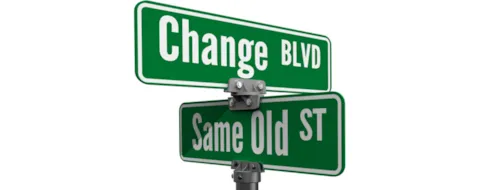What is the risk of crossing the road?
Quantification of the societal and individual risks of death for pedestrians crossing the road, and some thoughts on how dangerous it is.
“It’s not as dangerous as crossing the road” – it is a common benchmark to put risks into perspective by comparing with a hazardous activity we all know and accept. But exactly how dangerous is it to cross the road? Here is my attempt at an answer.
Societal Risk
The number of pedestrians killed on the road has fallen steadily in recent decades. In 2013 there were 24,033 reported casualties, including 398 fatalities, among pedestrians in Great Britain 1. Of these, 316 were crossing the road at the time.
Annual Individual Risk
What is the risk for an individual? There were 62.3 million people in Great Britain in 2013, so the average individual risk of death in crossing the road was 316/62.3 million = 5.1 x 10-6 per year in scientific form, or about 1 chance in 200,000 each year of being killed.
Obviously this is an average – it will be more for some people, less for others. But the annual risk is rather similar for all ages from 16 to 70.
Road Crossing Exposure
One factor that affects the risk is how often you cross the road – each time you do so, you accumulate a little more risk. It would be interesting to know how often people actually did cross the road. That is difficult to find, as hardly anyone other than risk analysts cares about such matters.
On a typical day I walk just over 3km and cross about 20 roads. But I live in the city and like walking, so that may be unusual. It would be better to do a survey of a larger group, and get each person to count so we can estimate how many times an average person crosses the road in a day. Ideally, this would be a representative sample across the country and from all ages and social backgrounds, but that is very ambitious.
Fortunately, there was an excellent analysis of pedestrian behaviour commissioned by the AA in 1994 2. This surveyed residents of Northampton, a town considered reasonably representative of conditions in Great Britain as a whole. The study participants walked an average of 825m each per day, of which 621m was along a road, and crossed an average of 3.9 roads per day. Having found no more recent analysis, I will assume these remain valid estimates of the national average.
Road Crossing Risk
Dividing the annual risk by the number of daily road crossings and the number of days in the year gives a fatality risk of 5.1 x 10-6/(3.9 x 365) = 3.6 x 10-9 per crossing, or about 1 chance in 300 million for each road crossing. This is the fatality risk for an average person crossing an average road. Undoubtedly some people and some crossing places have higher risks and some lower risks, and clearly for someone with suicidal intent the risk approaches one. But the average is still a useful benchmark.
Is Crossing the Road Dangerous?
The value I have calculated for the risk of dying in a single road crossing is very low. There are not many well-known risks that are smaller than 1 in 300 million. So why does everyone “know” that crossing the road is dangerous?
One way of looking at it goes back to definitions. Crossing the road is dangerous (a risk analyst might call it a “hazard”) because there is the potential to get killed if you look the wrong way and walk at the wrong time. But in reality we have applied so many safeguards like pedestrian crossings and traffic calming that the “risk” (that is the chance of death) is actually very low. From this perspective, crossing the road is “hazardous but not usually risky”.
Another perspective is the “availability” heuristic, which says we tend to over-estimate risks that come easily to mind. We stand very close to such dangers several times a day, so we can easily imagine being killed that way. Many of us have had a “near miss”, or know people who have been hit while crossing. From this perspective, crossing the road might be “less risky than you imagine”.
A contrasting perspective would be to compare with our remarkable fascination with unusual or catastrophic events. If 300 fatalities occurred in a plane crash in Britain each year, there would be a national outcry. But a succession of mundane and solitary deaths tends to get overlooked. Perhaps then it should be “more risky than you would realise from the news”.
Alternatively, one could distinguish the risk per crossing from the annual risk, as I have done. One chance in 300 million is very low for a single crossing, but 1 chance in 200,000 each year is more significant. For example, it is lower than the risk of dying in a house fire, but higher than the risk of being killed by lightning. From this perspective, crossing the road is “a low risk in each crossing that may add up to a significant annual risk”.
Finally, we could distinguish individual and societal risks. It may be only 1 chance in 300 million for one person making one crossing, but added up across the whole population, 300 deaths a year is still a lot.
“Any man’s death diminishes me,” John Donne wrote, “because I am involved in mankind”. The risk analyst’s less elegant conclusion is that there is “a low risk for an individual crossing, but a high societal risk”.
- “Reported Road Casualties Great Britain 2013”, Department for Transport, London, 2014.
https://www.gov.uk/government/uploads/system/uploads/attachment_data/file/359311/rrcgb-2013.pdf - “Pedestrian Activity and Accident Risk”, Ward, H. et al, AA Foundation for Road Safety Research, 1994.
http://www.roadsafetyfoundation.org/media/14088/pedestrian_activity_and_accident_risk.pdf
6/22/2015 8:00:00 AM
